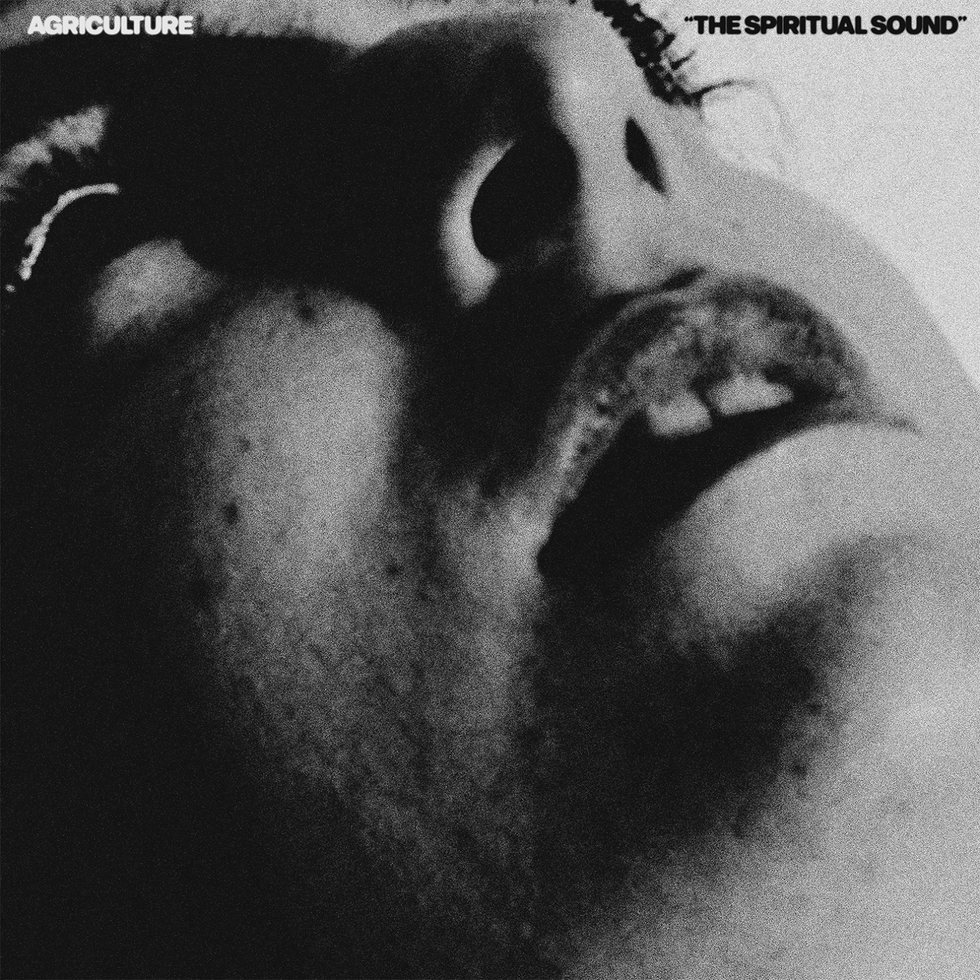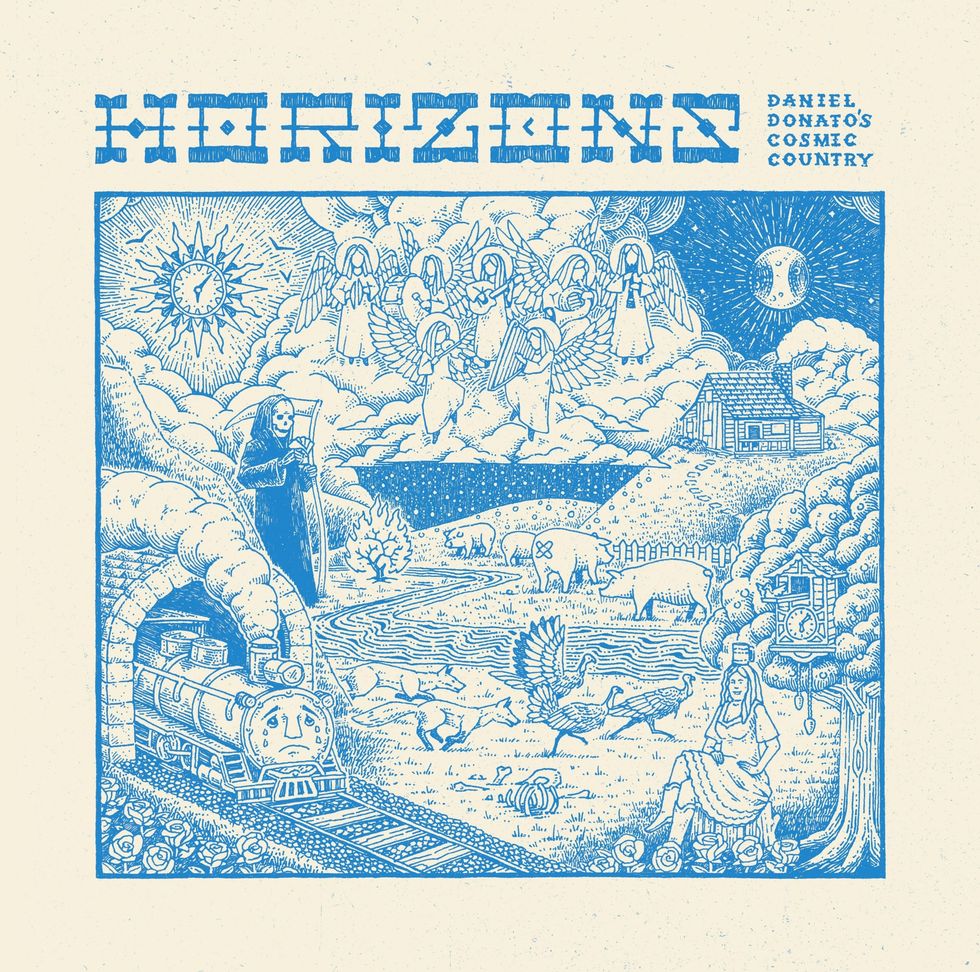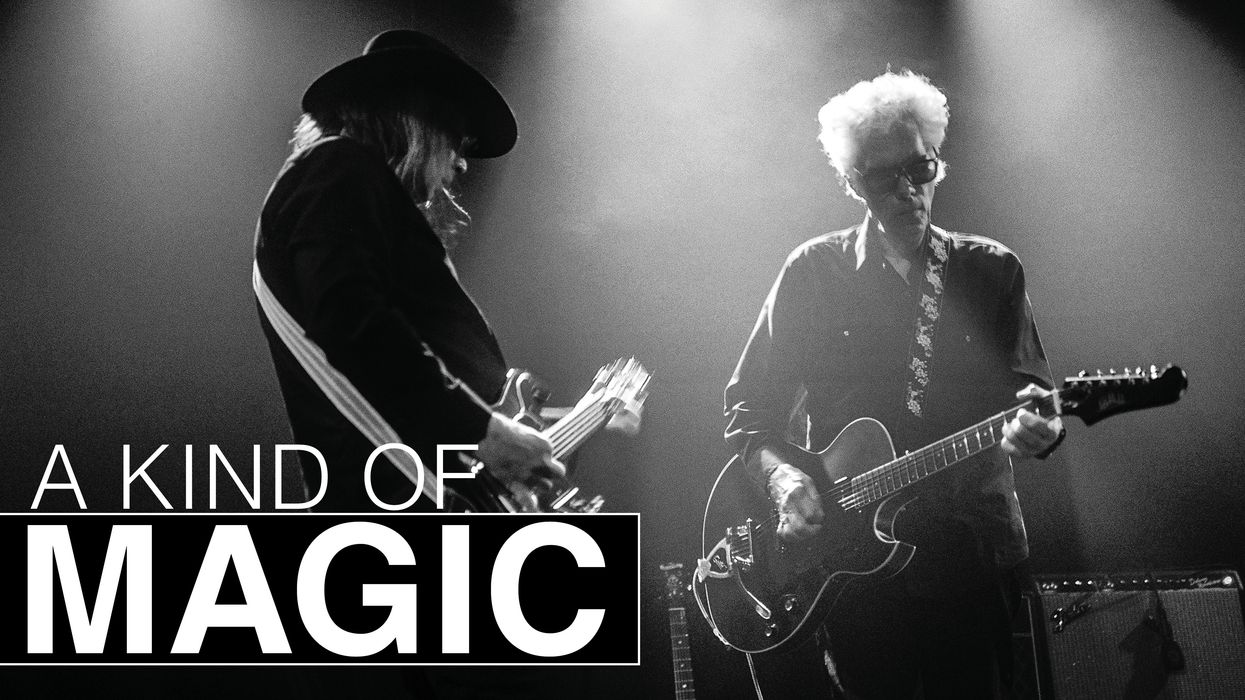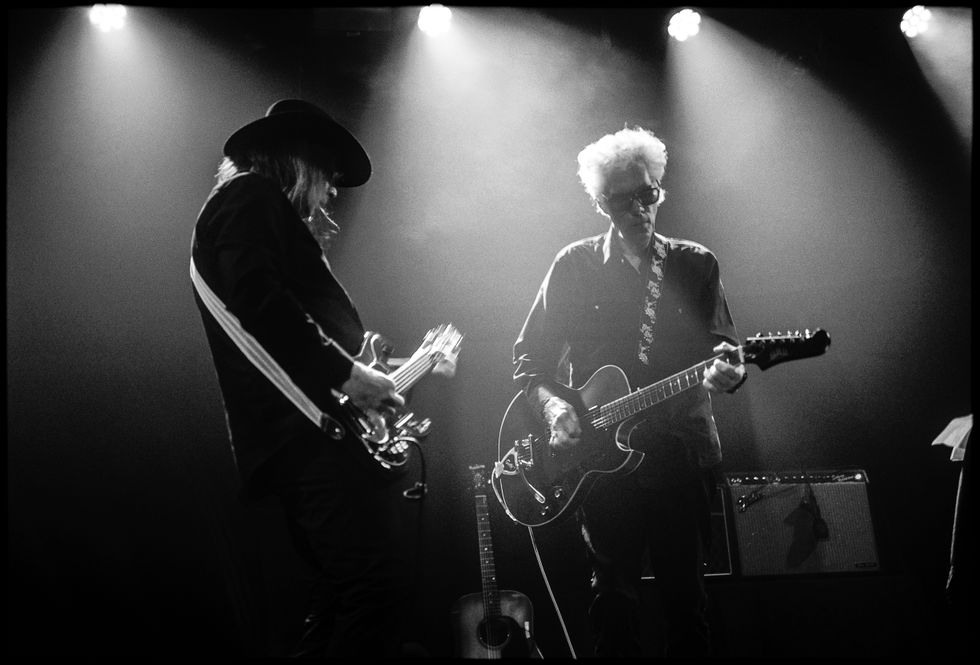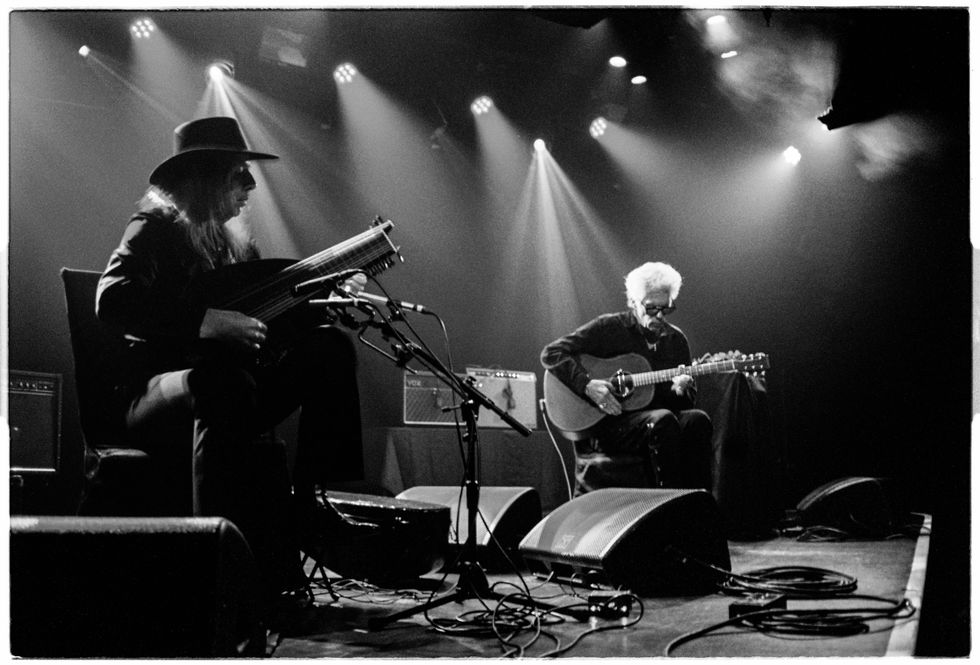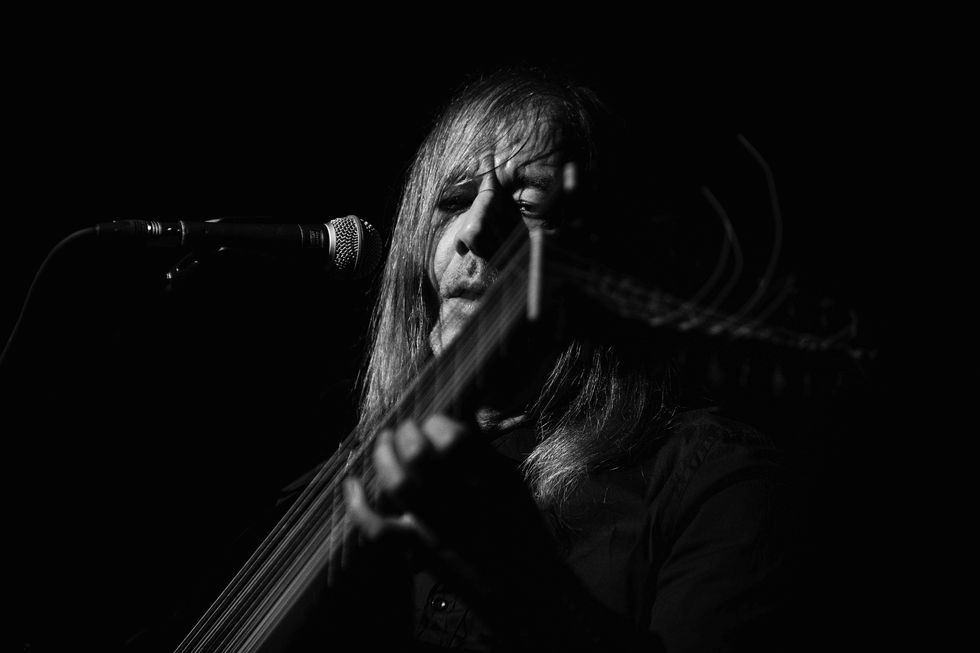There’s long been a cottage industry, driven by record collectors, musicologists, and guitar-heads, dedicated to the sounds that happened when cultures around the world got their hands on electric guitars. The influence goes in all directions. Dick Dale’s propulsive, percussive adaptation of “Misirlou”—a folk song among a variety of Eastern Mediterranean cultures—made the case for American musicians to explore sounds beyond our shores, and guitarists from Ry Cooder and David Lindley to Marc Ribot and Richard Bishop have spent decades fitting global guitar influences into their own musical concepts.
These days, trace the cutting edge of modern guitar and you’ll quickly find a different kind of musical ancestor to these early clashes of traditional styles and electric instruments. Listening to artists like Mdou Moctar, Meridian Brothers, and Hermanos Gutiérrez, it’s easy to hear how they’ve built upon the traditions they investigate. LA LOM’s tropical-guitar explorations are right in line with this crew.
If you’ve heard LA LOM, there’s a good chance it was because one of their vintage-inspired videos—which seem to portray a house band at an imaginary ’50s Havana or Bogota café as seen through an old-Hollywood lens—caught your eye via social media. (And for guitarists, Zac Sokolow’s bright red National Val-Pro, which he plays often, lights up on camera.) Once you tuned in, these guys probably stuck around your feed for a while.
LA LOM’s videos were mostly shot at the Roosevelt Hotel in Los Angeles and feature cover songs culled from the several-nights-a-week gig that they played there during the first few years of their existence. It’s that gig that started the band in 2019, when drummer/percussionist Nicholas Baker enlisted Sokolow and bassist Jake Faulkner to join him. Sokolow—who is also a banjo player and has worked in the L.A. folk scene as a member of the Americans and alongside Frank Fairfield and Jerron “Blind Boy” Paxton—explains that their first task was to find a repertoire for their instrumentation that started with electric guitar, upright bass, and congas. “One of the first things we played together were some of these old Mexican boleros,” he recalls. “I realized that Nick had an interest in that stuff—his grandmother used to listen to a lot of that kind of music.”
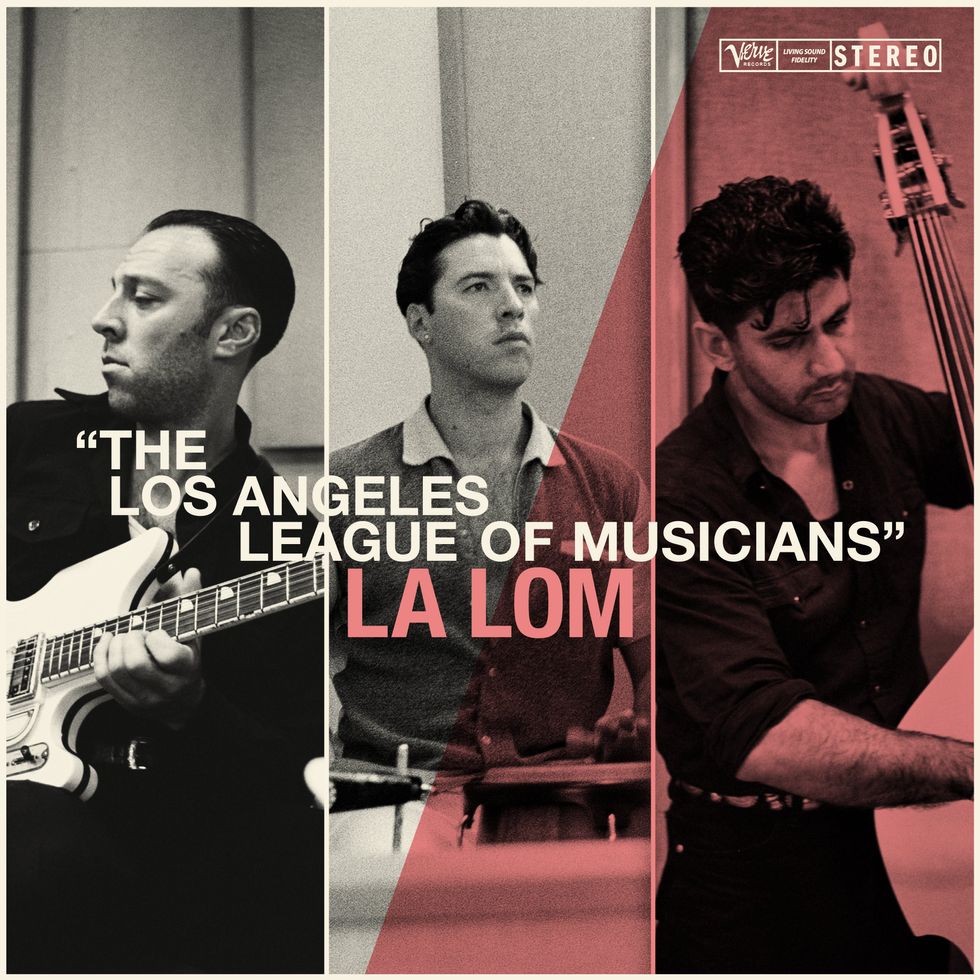
The trio’s all-original debut is steeped in the influences the band explored through their video covers.
Sokolow’s own early love of the requinto intros to boleros by classic NYC-based group Trio Los Panchos, as well as music from Buenos Aires that he’d picked up from his grandfather, informed their sets as well. Soon, LA LOM had embraced a repertoire that encompassed a wide variety of classic Latin sounds—Mexican folk, cumbia, chicha, salsa, tango, and more—blended with Bakersfield twang and soaked in surfy spring reverb.
The trio have moved beyond the Roosevelt Hotel—this year LA LOM played the Newport Folk Festival, and they’ve opened for Vampire Weekend. And the band’s newly released debut, The Los Angeles League of Musicians, is an all-original set of tunes that takes the deeply felt sounds of the material they covered in their early sets to the next logical musical destination, where they live together within the same sonic stew, cementing LA LOM’s vibey and danceable signature. On the album, Sokolow’s dynamic guitar playing is at the forefront. The de facto lead voice for the trio, he’s a master of twang who thrives on expressive melodies and riffs, and he’s always grooving.“One way that we differ a little bit from a lot of those ’60s Peruvian bands—we don’t really get as psychedelic in the traditional way.”
Zac Sokolow's Gear
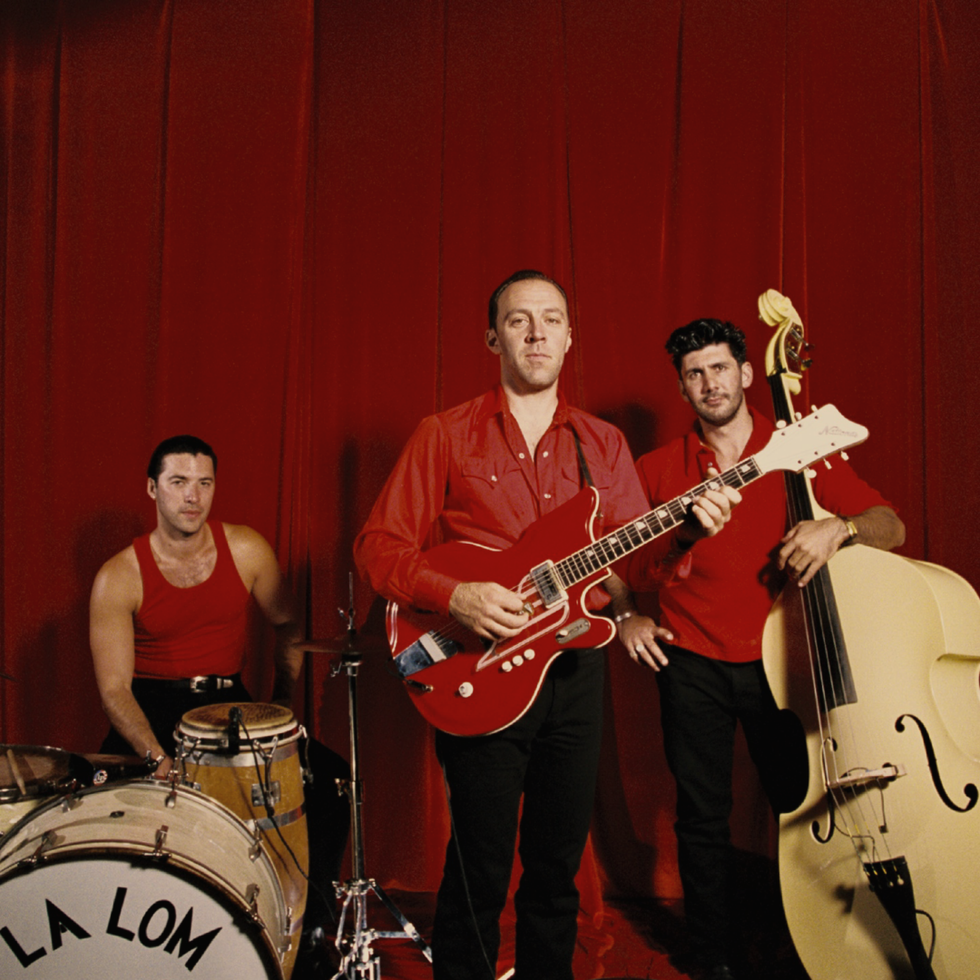
Sokolow plays just a couple guitars. His red, semi-hollow “Res-O-Glas” National Val-Pro is the most eye-catching of them all.
Guitars
- National Val-Pro (red and white)
- Kay Style Leader
Amps
- Fender Deluxe or Twin ’65 reissue
- Vintage Magnatone
Effects
- Boss Analog Delay
- Fultone Full-Drive
Strings and Picks
- D’Addario or Gabriel Tenorio (.012–.052)
- D’Andrea Proplex 1.5 mm
LA LOM’s cover-song videos detail the rich blueprint of the band’s sound, and they also serve as an excellent primer for tropical guitar styles. We assembled a setlist of those covers, as if LA LOM were playing our own private function and we were curating the tunes, and asked Zac to share his thoughts on each.
“When you play Selena, it always just goes over well—everybody loves Selena.”
The Set List—How LA LOM Plays Favorites
“La Danza De Los Mirlos” Los Mirlos
“Los Mirlos are a group from Peru. They’re from the Amazon. They’re one of the most well-known classic chicha bands that play that Peruvian jungle style of cumbia. I’ve tried to look into what the history of that song is. As far as I know, they wrote it. I’ve heard some older Colombian cumbias that have similar sections; I think it’s kind of borrowing from some old cumbias, and a lot of people have covered it over the years. In Mexico it’s known as ‘La Cumbia de Los Pajaritos.’
“It’s always been one of my favorites—especially of the guitar-led cumbias. The way we play it is not too different from the original, and it’s one of the first Peruvian chicha kind of tunes we were playing.”
“Juana La Cubana” Fito Olivares Y Su Grupo
“That’s a song from a musician from Northern Mexico, on the border of Texas, who sort of got popular playing in Houston. It’s very much in that particular style of Texas-sounding cumbia from the ’90s. He’s playing the melody on the saxophone. That song is so famous, and you hear it all the time on the radio.
“There was one time that I was driving home from a gig really late at night and heard that, and realized there’s some little saxophone lick he’s playing that kind of sounds like “Pretty Woman,” the Roy Orbison song. I had this idea that it would sound more like ’50s rock ‘n’ roll played that way. We started just playing it [that way] at gigs, and it sounded really good instrumentally. That’s how we decide to keep something in a repertoire—if it feels really good when we play it.”
“La Danza Del Petrolero” Los Wembler’s de Iquitos
“That is from another group from Peru called Los Wembler’s de Iquitos. They’re from Iquitos, Peru. It’s kind of dedicated to the petroleum workers.
“I would say one way that we differ a little bit from a lot of those ’60s Peruvian bands is we don’t really get as psychedelic in the traditional way. We don’t use that much wah pedal. I usually keep my tone pretty clean. I’ll have reverb and a little bit of delay sometimes with vibrato, but we don’t go for any really crazy sounds. Usually, we keep it almost more in a country or rockabilly kind of world, which has just sort of always been my tone.”
“One of the first things we played together were some of these old Mexican boleros.”
“Como La Flor” Selena
“That’s probably one of the first cumbias I ever heard. There’s something very emotional about that melody. It's kind of sad, and really beautiful and catchy. When we play that out, people just go crazy. When you play Selena, it always goes over well—everybody loves Selena. And we made a video of that with our friend Cody Farwell playing lap steel. He was trying to find a way to fit steel into it, and I don’t think I’d ever really heard the steel being played on a cumbia before. He was always kind of finding cool ways to fit it in and make the tone fit with ours. On our record, there’s a bunch of his steel playing all over it. It came out sounding pretty different from other covers I’ve heard of that.”
“El Paso Del Gigante” Grupo Soñador
“Grupo Soñador are from Puebla, Mexico, and they were a real classic band playing this kind of style. They call it cumbia sonidera. I feel like that style and that name is more almost about the culture surrounding the music than just the music itself. There’ll be these impromptu dances that happen sometimes on the street or in dance halls, and they’re usually run by DJs who will play all these records and sometimes slow them down or add crazy sound effects or talk into the microphone and give shoutouts to people with crazy echo and stuff on their voices.
“A lot of the records that came from that scene have a lot of synthesizers. Usually, the melody is played by the accordion or the synthesizer with crazy effects. It just has such a cool sound.
“I try to kind of imitate that sound on my guitar as much as I can. Something I often do with LA LOM is to try to get the feeling of another instrument, because in so much of the music we play or the covers we do, it’s some other instrument, whether it’s a saxophone or a synth or accordion playing the melody.”
“Los Sabanales” Calixto Ochoa
“That was written by Calixto Ochoa, from Colombia, who I’ve heard referred to as “El Rey de Vallenato”—the king of Vallenato, which is a style of cumbia that came from mostly around the city called Valledupar in Colombia. And that’s the classic accordion-led cumbia. The much older cumbia was just called the gaiteros, with the guy who played flute and drums. And then the Vallenato style emerged, which is that accordion-led stuff, and Calixto Ochoa. He’s just the coolest. We’ve learned a couple of different covers of his. I think the way we play this is more like rockabilly than cumbia.”
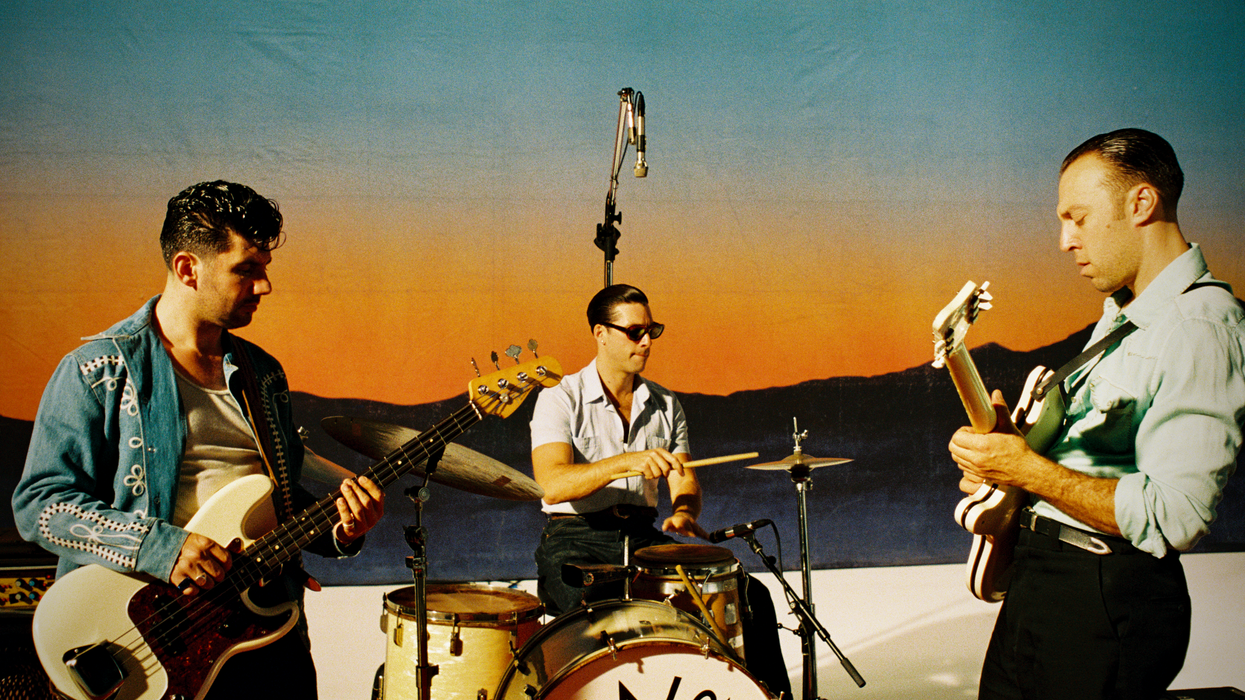





![Rig Rundown: AFI [2025]](https://www.premierguitar.com/media-library/youtube.jpg?id=62064741&width=1245&height=700&quality=70&coordinates=0%2C0%2C0%2C0)












 Shop Scott's Rig
Shop Scott's Rig
![Devon Eisenbarger [Katy Perry] Rig Rundown](https://www.premierguitar.com/media-library/youtube.jpg?id=61774583&width=1245&height=700&quality=70&coordinates=0%2C0%2C0%2C0)





